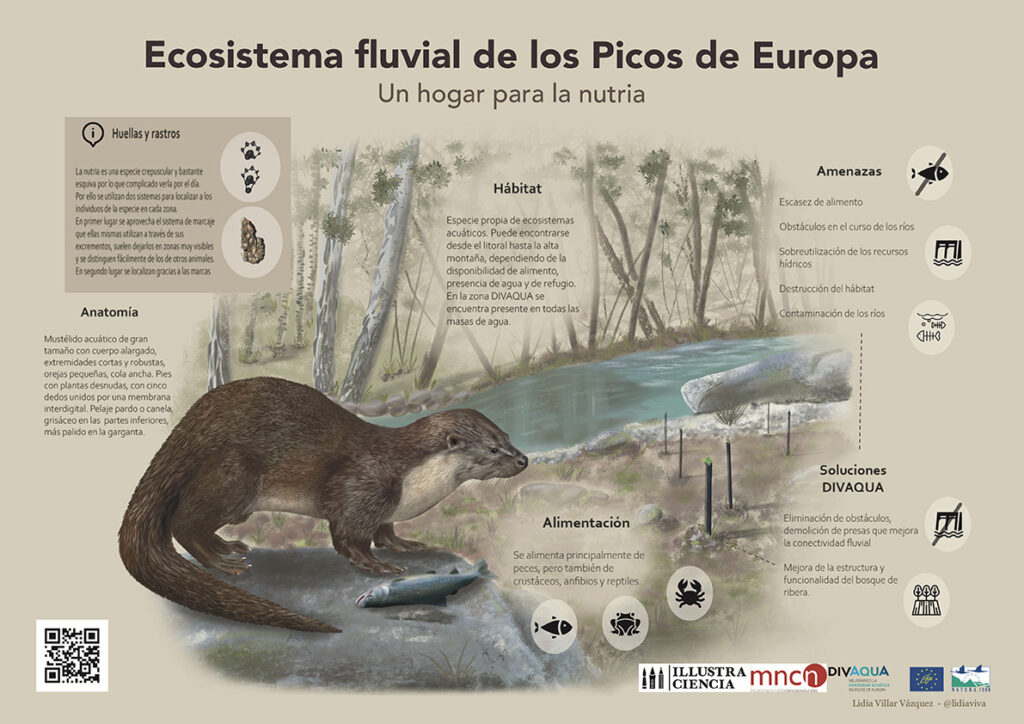Threats
Food scarcity
Barriers in river courses
Overuse of water resources
Habitat destruction
River pollution
Anatomy
Large aquatic mustelid with a long body, short and stocky limbs, small ears and a broad tail. Feet with bare soles and five toes joined by webbing. Brownish or cinnamon-coloured fur with a greyish underside, paler around the throat.
Food
It mainly feeds on fish, but also on crustaceans, amphibians and reptiles.
DIVAQUA solutions
Removal of barriers, demolition of dams to improve river connectivity.
Improvement of the structure and functionality of riparian woodland.

